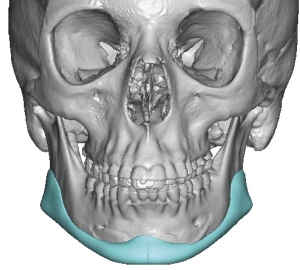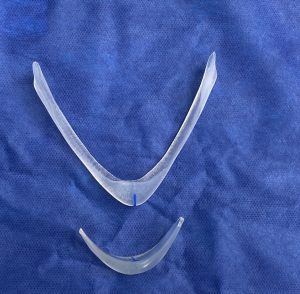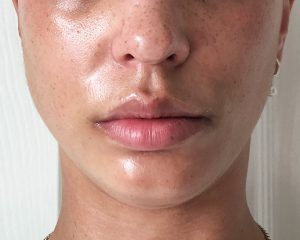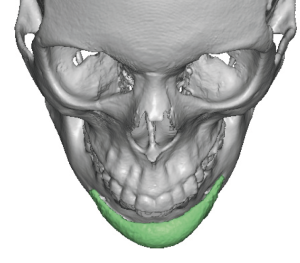Background: Chin implants are a common facial augmentation procedure which can be very effective in the properly selected patient. It is almost always the procedure that is done when a patient presents to a plastic surgeon for ‘chin augmentation’ or ‘jaw enhancement’. This is because it is the jaw augmentation procedure of which most surgeons are familiar and can reliably do. The number of chin implant styles and sizes is a testament to the familiarity of the procedure in many plastic surgeons aesthetic facial armamentariums.
But the chin implant is only effective if augmentation of the front end of the lower jaw is what is aesthetically needed and the right style/size and placement of the implant is done. Most unsuccessful chin implants fail for either lack of proper diagnosis or implant size and/or placement was inadequate. Such results prompt the patient to then be more thorough in their search for an improved result…often looking for a more complete jaw augmentation approach as well as the use of a custom implant design to achieve it.
While more men than women migrate to a complete lower jaw augmentation procedure via a custom jawline implant, there are some key implant design differences. Not unsurprisingly there are gender preferences for the size and shape of the implant as most male jaw augmentation goals differ from that of a female. Smaller implant sizes and volume, a more rounded chin and less jaw angle widths are the major differences to consider.
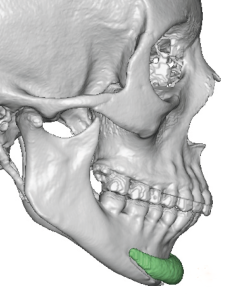

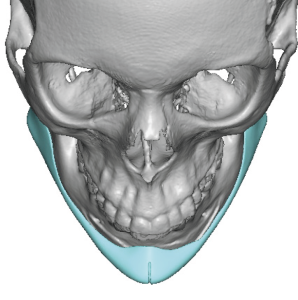

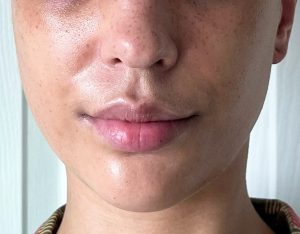
While there was certainly no harm in initially placing a 7mm projection standard chin implant this will rarely be effective when the origin of the chin deficiency is an overall jaw deficiency. (as seen by her significant overbite) It was also clear from the beginning that the chin and jaw were also vertically short. Even an isolated chin augmentation would require a combined horizontal and vertical lengthening. This is really a function of the failure to diagnosis the dimensions of the jaw deficiency and only seeing a lack of horizontal chin projection.
As a female she preferred the anterior incisional access to be intraoral, the same method by which the chin implant was placed. While this does increase the risk of infection I can certainly respect her desire to avoid a submental incisional scar. Given the smaller size of her jawline implant (10ccs) it was certainly possible to do so and safely pass the implant under the mental nerves on each side.

Key Points:
1) Chin and jawline augmentations in females are different than men both in shape and magnitude of change.
2) While chin implants come in anatomic styles this does not reflect
whether they are appropriate find shape for females.
3) Many females prefer a completely intraoral approach for custom jawline implant placement.
Dr. Barry Eppley
World-Renowned Plastic Surgeon





